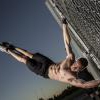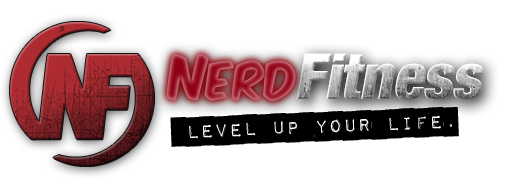-
Posts
27 -
Joined
-
Last visited
About jayandrade22
-
Rank
Newbie
-
When traveling I like to do Tabata workouts. They are quick, exhausting, and really simple. Plus they are probably similar to the circuit training you do with your trainer. If you haven't heard of it before, Tabata is an interval training routine where you spend 4 minutes on each exercise perform the exercises for 20 seconds "on" and resting for 10 seconds "off". That means you go through 8 rounds of each exercise. The important thing about this routine is that you stay on the same exercise for the 4 minutes or 8 rounds before progressing to the next exercise. Here is a simple Tabata routine you can do in your hotel: 1) Push ups 2) Jump squats 3) Mason Twists 4) Chair dips 5) Jumping alternating lunges 6) Mountain climbers other alternative exercises that work in this routine: -burpees -band work -handstand hold against wall Also, here is a link to a tabata clock : http://fitlb.com/tabata-timer
-

New Calisthenics Video!!! Woot Woot
jayandrade22 replied to jayandrade22's topic in Rebel Army Base Camp
Now it's about getting creative with what surrounds us. We still have some work to put in on the skills (i.e. better front lever, full planche, etc) so that they look effortless. Then it's about stringing several skills together and mastering our body control so that the world truly becomes our playground . Most importantly, it's about staying motivated and feeling healthy. The videos and the support we get continues to push us to grow every time we step outside. It is also important to note that neither of us have any gymnastics training. Our results have come from pure dedication, persistence, and hard work. Thanks again for the kind words.- 5 replies
-
- 1
-

-
- calisthenics
- motivation
-
(and 1 more)
Tagged with:
-
The only weights I do is the occasional added weighted vest or a 9 lbs sand belt, but the exercises are still the same full body functional exercises we have done since PE in grammar school. I don't think there is anything wrong with doing both. It just comes down to what's accessible and what you prefer.
- 30 replies
-
- motivation
- calisthenics
-
(and 1 more)
Tagged with:
-
Love it! Very True! A few other points: -I somewhat agree with you about organs being "used-up". Yes, using the liver is not going to cause its functions to deplete, but enzymatic functions are limited. If too much acetyl-CoA (the monomer of Fructose) is present, it can be shunted into other biochemical processes like DNL (only extreme cases). So, the liver isn't failing by any means. Non-alcoholic fatty liver disease is merely a consequence of another biochemical function of the liver, DNL. Another example of organs being "used up" is in congestive heart failure. Yes, I understand there is a plethora of elements that lead to this tragic problem, but in its simplicity the heart has a limited amount of beats, and this is one of the purest limitations to medicine. -There is still little known about DNL. In fact, the process of analyzing DNL is still very primitive. Past studies have used indirect calorimetry, which can only analyze the amount of DNL beyond what's used for energy, which is like looking at the tip of the iceberg. I don't yet know the impact of DNL on the body but a lot of government money is being put towards my lab to understand more, so "proven time and time again" might be a little strong. The concept is interesting at the least, more so for increasing LDL circulation and CVD than non-alcoholic fatty liver. -Last, I acknowledge that fructose can be converted into glucose but it is a very energy expensive and elaborate pathway that isn't often done (mostly, because the enzyme glucokinase is more prominently found in muscle and other tissues). Fructose, is freely broken down into acetyl-CoA for use in the krebs cycle or stored as glycogen in the process of gluconeogenesis. Here is the pathway incase you are interested. http://www.morehouse.edu/facstaff/lshipman/stopandgo.jpg My biggest point is this stuff is complex and a lot is still l unknown. Also, I may be wrong but I am excited to learn more about this stuff from a scientific point of view in my lab. Thanks for the words Waldo. It definitely stirred up conversation in me and got me thinking, which is the point.
-
Manok. You aren't kidding about #4!!!! haha well put. Great stuff guys! Another thing I love about it is it teaches skill and coordination, as most of the exercises involve coordination of the entire body (legs, core, arms).
- 30 replies
-
- motivation
- calisthenics
-
(and 1 more)
Tagged with:
-
I agree Bigm141414. I think the bigger problem lies in society who now consumes a diet that is dramatically higher in sugar and the small amount of difference between the two sugars becomes notable when given in abundance. Please forgive me if the title came off too strong. I was attempting to keep with the theme of good/evil/superhero/villain. But the post is worded much more clearly. I use the words "overloading consumption" and "overabundance" to acknowledge the true concerns with HFCS (and sugar in general). I have to admit, all of the studies I am working on and looking at involve exhaustingly high amounts of HFCS and therefore, fructose. Yes, this may seem unrealistic and it can seem to give HFCS a bad rep but societal trends are approaching these limitations and more needs to be understood. So I want to hear more.... Tell me your opinions, suggestions, curiosities about HFCS. Regardless of whether you think it is good or bad. It can only help me in creating better and more relevant research.
-
After the amazing feedback I have gotten from my first post on "What Motivates you to start a healthy Life?" I wanted to dig further into the bodyweight fanatic's mind and ask why, out of all the fitness routines out there, have you chosen bodyweight/calisthenics fitness??? Share your experiences, thoughts, and motivations and maybe your words can resonate with someone else, and enlighten them on the beauty of this lifestyle. I'll start by simple saying I love being outside and experiencing the world as I workout. Being cooped up in a tight packed, people overloaded weight room really messes with my mental psyche.
- 30 replies
-
- motivation
- calisthenics
-
(and 1 more)
Tagged with:
-
Check out my friend and my video. I'm pretty proud of our progress and the skills help motivate us to push ourselves further each day. Get Outside, Get Active, and be the best you can be. https://www.youtube.com/watch?v=w9dlh6KLcY4 Let me know what you think
- 5 replies
-
- 1
-

-
- calisthenics
- motivation
-
(and 1 more)
Tagged with:
-
Towel hang pull ups or just simple towel hangs are crazy difficult and great for grip strength.
-
Here is a link to a full plyometric leg workout inspired by P90X's Plyo X that I have put together. I usually only share it once a week on Thursdays but I love this forum and many of you might like it. It always kicks my ass and the timed intervals allow for everyone to go at their own pace (as fast or slow as they desire). Give it a shot and let me know what you think. http://www.californiacalisthenics.com/yosemite.html
-
My Masters work has been spent on studying the overloading consumption of HFCS. Without getting into too much biochemical mumbo jumbo I wanted to share some interesting tidbits and hear about what others have heard or experienced. Tidbit #1: Fructose is almost exclusively broken down in the liver, meaning an overabundance can have a detrimental effect on this very important organ (i.e. Non-alcoholic fatty liver disease)
-

What Motivated you to Start a Healthy Life?
jayandrade22 replied to jayandrade22's topic in Rebel Army Base Camp
So powerful & inspiring. This thread has already surpassed my expectations. Thank you all for sharing and I look forward to reading more. This thread is motivating in itself! -
I definitely agree with Manok about the rings. They add an extra piece of instability and now your chest has to be over-activated to fight the rings from sliding out wide, out of position. You can also use them to perform a chest fly which will almost eliminate the action of the triceps completely. Beyond rings, I believe diamond pushups are the best for chest, especially inner chest. This is because the positioning of your hands (pointer and thumbs in the shape of a diamond) forces your elbows to have the most dramatic change in the range of motion and move in the same relative fashion to the pec muscle fibers. When you're at the base of the exercise, your elbows are out far from your sides causing your chest to open up and maximizing the muscle length. When you are at the peak of the exercise, your elbows are very near and your chest is now closed off, which holds the muscle in full contraction. The chest is, therefore, being put through its full ROM, as opposed to other variations (with your elbows relatively locked) that limit the amount your chest can open or close in the motion. That was more difficult to explain than I thought. Hope I made it clear enough.
-

Swim Fins - Good Idea?
jayandrade22 replied to DuchessInky's topic in Running, Swimming, Biking, Walking, Hiking
Syren has a very well written and thought out answer to your question. I just wanted to add that fins can be a great supplement for new swimmers seeing as they function best with a proper kick. This is exactly what Syren describes as a kick from the thighs and pointed toes. Fins can be difficult, frustrating, and even a little painful when first using them, but as your body progresses towards max efficiency and a proper kick (which it eventually will), the benefit of the fins can become multiplicative. Take your time, practice at a balanced pace, and stick with it. -

What Motivated you to Start a Healthy Life?
jayandrade22 replied to jayandrade22's topic in Rebel Army Base Camp
I'm with you Teagarden. I know I am going to be a stubborn old person who will fight getting older and slowing down. So might as well try to prolong that process and take advantage of what we are capable now.

